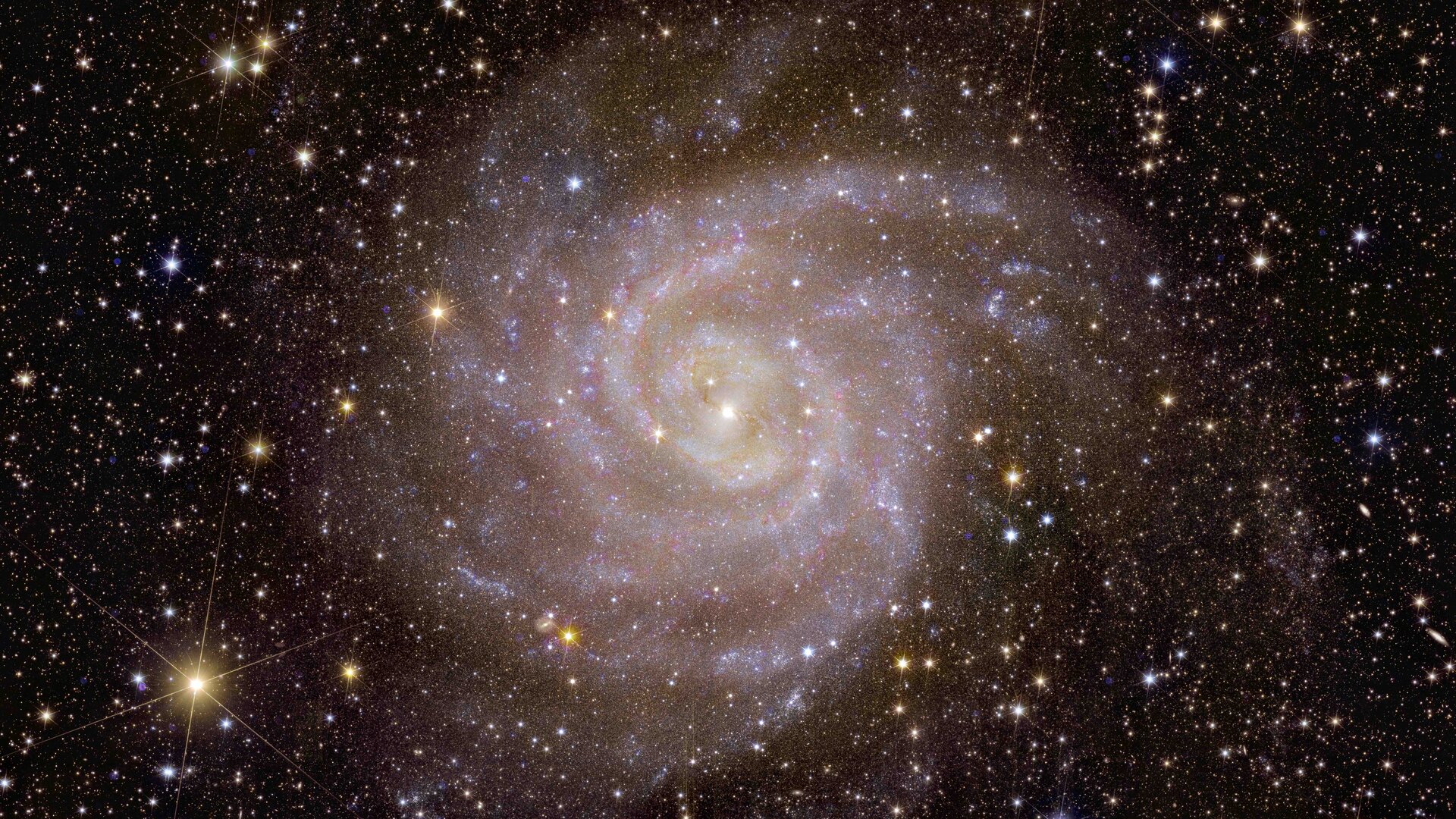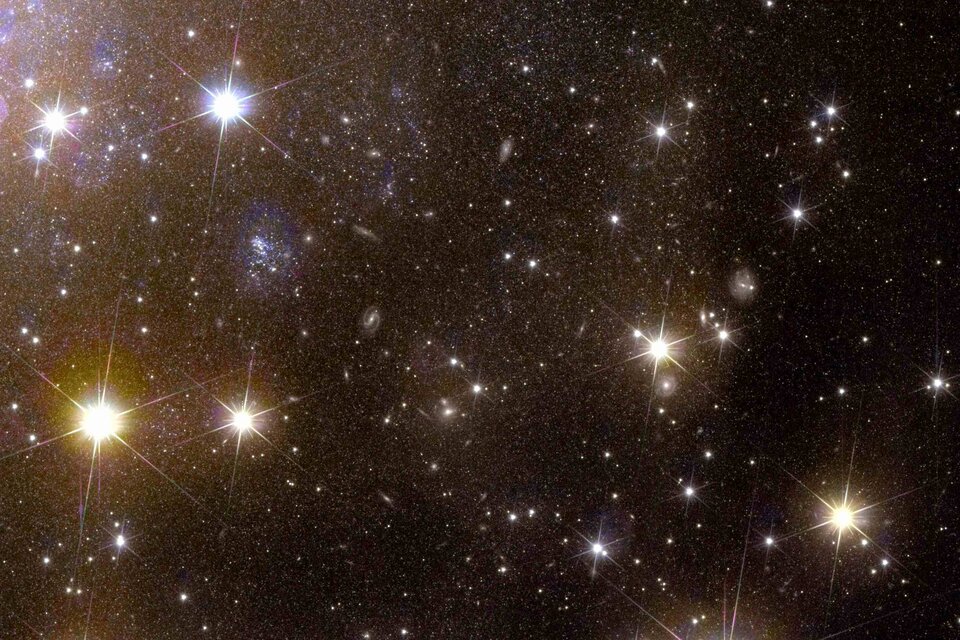Euclid’s view of spiral galaxy IC 342
Over its lifetime, our dark Universe detective will image billions of galaxies, revealing the hidden influence that dark matter and dark energy have on them.
That’s why it’s fitting that one of the first galaxies that Euclid observed is nicknamed the ‘Hidden Galaxy’. This galaxy, also known as IC 342 or Caldwell 5, is difficult to observe because it lies behind the busy disc of our Milky Way, and so dust, gas and stars obscure our view.

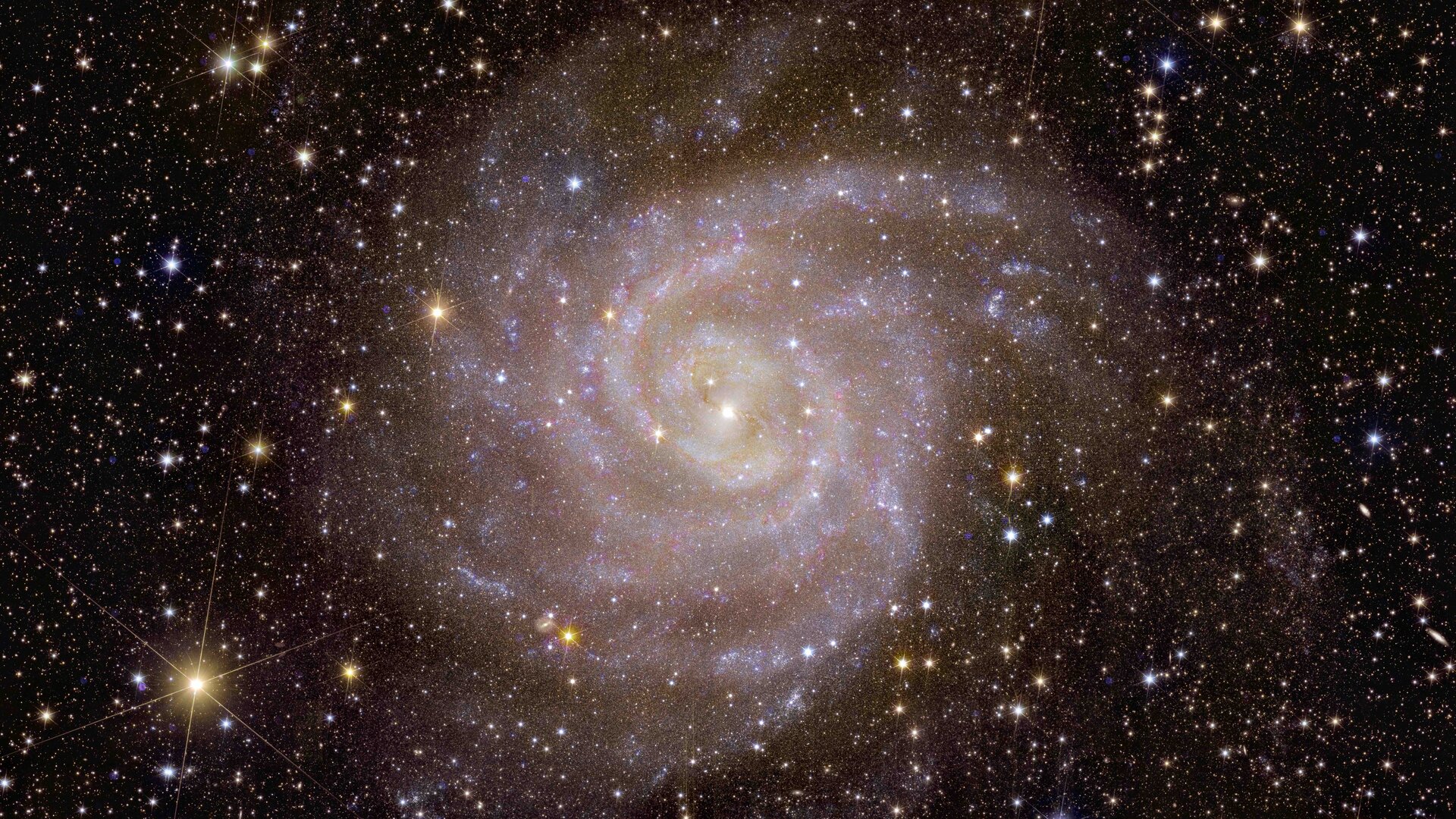
Access the video
Euclid could take this beautiful and sharp image thanks to its incredible sensitivity and superb optics. Most important here is that Euclid used its near-infrared instrument to peer through the dust and measure the light from the many cool and low-mass stars that dominate the galaxy's mass.
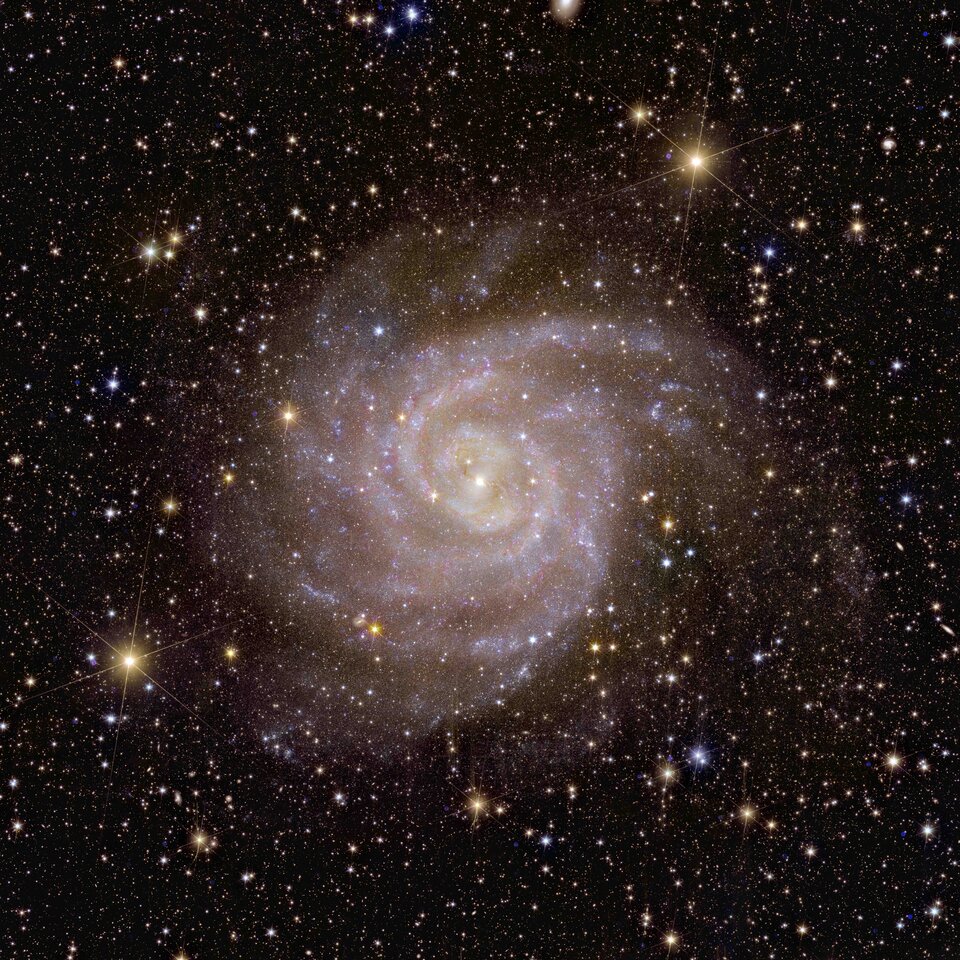
“That’s what is so brilliant about Euclid images. In one shot, it can see the whole galaxy in all its beautiful detail,” explains Euclid Consortium scientist Leslie Hunt of the National Institute for Astrophysics in Italy, on behalf of a broader team working on showcasing galaxies imaged by Euclid.
“This image might look normal, as if every telescope can make such an image, but that is not true. What’s so special here is that we have a wide view covering the entire galaxy, but we can also zoom in to distinguish single stars and star clusters. This makes it possible to trace the history of star formation and better understand how stars formed and evolved over the lifetime of the galaxy.”
IC 342 is located around 11 million light-years from Earth, very nearby our own galaxy (in astronomical distances). It is as large as the full Moon on the sky. And as a spiral galaxy, it is considered a look-alike of the Milky Way. “It is difficult to study our own galaxy as we are within it and can only see it edge on. So, by studying galaxies like IC 342, we can learn a lot about galaxies like our own,” adds Leslie.
Euclid is not the first to observe the Hidden Galaxy. The NASA/ESA Hubble Space Telescope has previously imaged its core. But until now it has been impossible to study the star-formation history of the entire galaxy. Additionally, scientists have already spotted many globular clusters in this image, some of which have not been previously identified.
Euclid will observe billions of similar but more distant galaxies, all distributed along a ‘cosmic web’ of dark matter filaments. In this way, it will provide a 3D view of the dark matter distribution in our Universe. The map of the distribution of galaxies over cosmic time will also teach us about dark energy, which accelerates the expansion of the Universe.
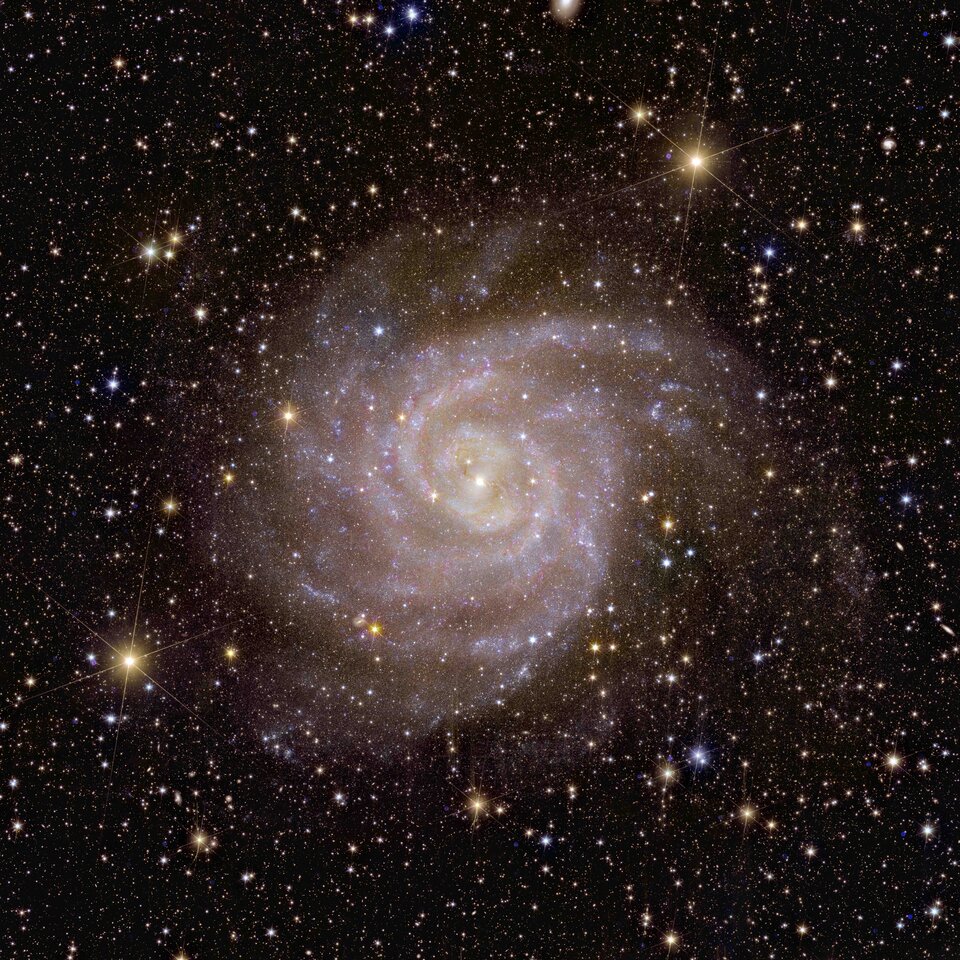
Click on the image on the right to find globular clusters in Euclid's view of IC 342. Globular clusters are compact collections of hundreds of thousands of stars held together by gravity.In spiral galaxies, like our Milky Way, these globular clusters are mostly found in the galactic halo.


